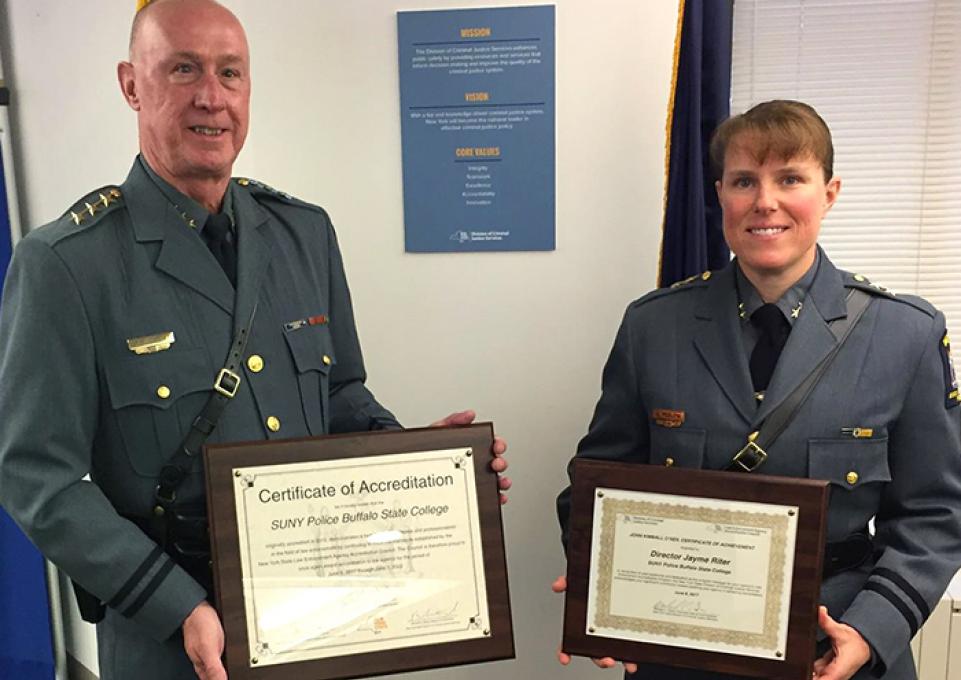
The University Police Department (UPD) at Buffalo State have earned reaccreditation from the New York State Division of Criminal Justice Services Accreditation Council. UPD was first accredited in June 2012. Only 25 percent of all police departments in New York State are accredited.
“The accreditation process impacts almost everything we do,” said Peter Carey, chief of police (at left). “All our policies have to meet the standards of the accreditation program.”
That’s no small task. The accreditation program includes 110 standards, organized into three categories: administration, training, and operations. The program’s four primary goals are to increase effectiveness and efficiency; to promote increased cooperation and coordination among law enforcement agencies; to ensure appropriate training; and to promote public confidence.
Participation in the accreditation process is entirely voluntary. “We do it because it ensures we have the best, most up-to-date practices,” said Carey. “One result of participation is that we’re undergoing constant reassessment and making appropriate changes to our policies.”
Every aspect of UPD’s operation is affected by the standards. Besides administrative procedures, the standards encompass basic and in-service instruction as well as training for supervisors. Operations standards deal with such critical and litigious topics as high-speed pursuits, roadblocks, patrol, and unusual occurrences.
“We have procedures in place to document our compliance,” said Carey. “That provides us with proof that we are actually implementing the standards and following the policies we’ve established.”
The policies cover everything from dealing with a driving-under-the-influence event to the use of social media. Another policy is a park-and-walk requirement that applies to every officer on every shift, who must leave their car and walk on campus. “Last year, we had 2,600 contacts with people during the park-and-walks,” said Carey. “That’s part of our community policing program. Our officers document not only their walks but also interactions other than the most casual. The idea is that walking around invites people to approach the officers. You can’t approach an officer who’s in a car.”
Officers walk through all the buildings on campus daily, including student housing, classroom buildings, and offices. “We don’t disrupt any activities,” said Amy Pedlow, assistant chief of police (at right). “We wouldn’t go into a classroom or an office in use.” On foot and on bicycle, officers patrol the campus quads and parking lots as well.
As a police force serving a campus community, presentations are an important part of UPD’s work. “Last year, including our educational programs and presentations at student orientations, we talked to more than 6,000 people,” said Carey.
“When we talk to parents at orientation, they really appreciate that we’re accredited,” said Pedlow.
Carey said that the accreditation process improves UPD’s operation and creates accountability. “When you go through the accreditation process the first time, it forces you to organize your process and operations,” he said. “You can’t just have a set of binders on the wall. When the accreditors came, they spent three days reviewing our material and talking to our officers. The process is good and helpful. They don’t just give the accreditation away; you have to earn it.”
